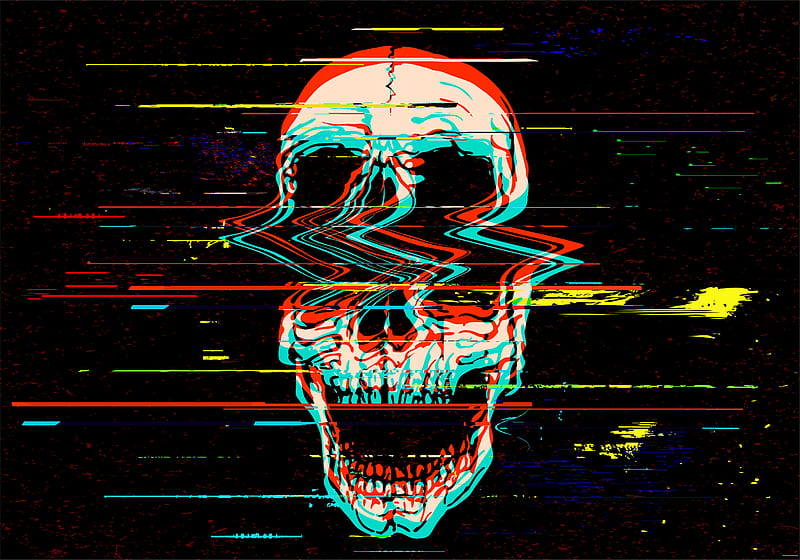We can use a type of a ‘picture’ or ‘visualization’ to help make sense of Nondual Psychology – not that we ever can make sense of the nondual of course – not in an intellectual or rational sense anyway. The picture that we talking about here is however perfectly straightforward and no real challenge at all to understand – it’s a simple ‘visualization exercise’. All we have to do for this exercise is to imagine that we are going around life wearing a suit of armour and that – crucially – we never take this armour off. This is no ordinary suit of armour however – it has some very special properties. One of these properties is that it functions like high-tech prosthetic armour, which is to say, it walks (or runs) us around the place without any effort on our part. Whatever actions we wish to take the world, this prosthetic suit of armour promptly enacts for us; in this imaginary scenario (as we have said) we don’t actually have do anything ourselves – all is done for us. This brings us to the second special property of the PA – the second property derives from the fact that it enacts all our intentions so promptly and so smoothly. The natural consequence of the PA doing everything for us so smoothly and effortlessly is that we automatically assume that it’s us doing everything and that there isn’t some kind of ‘mechanical servant’ doing everything for us. An illusion has been created therefore – the illusion that we are autonomous beings when we are not.
There is another, third property of the PA to be taken into consideration too however – a somewhat more ‘sinister’ property, we could say. Not only does ‘the faithful mechanical servant’ instantaneously enact all our wishes for us, it also provides us with them as well! It ‘tells us what we like’, in other words. In one way therefore, it could be said that the mechanical servant (or the PA) is providing the ultimate service for us, taking all the work away from us so all we have to do is ‘sit back and enjoy the ride’. This brings to mind both Colin Wilson’s ‘internal robot’ and David Bohm’s idea that the system of thought runs us whilst telling us that we are running it:
But you don’t decide what to do with the info. Thought runs you. Thought, however, gives false info that you are running it, that you are the one who controls thought. Whereas actually thought is the one which controls each one of us.
The mechanical servant (the PA) does everything for us therefore, including our way of looking at the world, including our ideas and thoughts and beliefs about the world. It also provides us – as David Bohm says – with the ‘empowering’ illusion that we ‘doing it all ourselves’, the illusion that we are the ‘hero of the story’, that we are the ‘star of the show’.
If we can imagine this therefore, then we’ve got the full picture! We’re ‘ready to go’. All we have to do is visualize ourselves going around in our daily life with the invisible help of the PA (which as we keep saying ‘facilitates us without us realizing it’ as well as ‘telling us everything we need to know about our situation’). If we can imagine this then we are now in a good position to understand the key difference between what we could call ‘dual psychology’ and ‘nondual psychology’. A conventional psychologist (or conventional therapist) would say that we can do certain things (or change our thinking in certain ways) so as to improve our mental health, whilst a nondual psychologist would say that this is not possible. A nondual psychologist would say that ‘us changing ourselves’ is the most ‘impossible thing’ there ever could be!
If we reflect on our visualization-model of the invisible PA we can very easily see why this business of ‘deliberately changing ourselves’ cannot work, why all ‘rational/purposeful’ therapeutic approaches (such as CBT) cannot be used to genuinely improve our situation. Any ‘problems’ with our mental health are – we might say – inevitably going to stem from our lack of genuine autonomy; we’re not really living our lives (the PA is doing that for us) and so this is an illegitimate ‘shortcut’ that – sooner or later – is going to catch up with us and reveal itself to us in the form of neurotic suffering, in the form of ‘disorders of our mental health’. It might be said that we do have a type of autonomy (we have what we might call ‘pseudo-autonomy’), just as it might be said that we do we have a type of mental health (the system of thought tells us that we are ‘mentally well’ just as it tells us that we are autonomous) but this type of phoney appearance of autonomy or freedom isn’t really going to cut the mustard’ at the end of the day. It’s all just for show – there’s nothing actually in it to do us any good!
Furthermore, if it is a fact that the PA (the ‘mechanical servant’ or Colin Wilson’s ‘internal robot’) has taken over our life for us without us knowing (or caring) that it has done so then any ‘deliberate’ or ‘purposeful’ act that we might engage in so as to try to improve our situation is actually going to be carried out by the PA not us. The PA is in charge every step of the way so how can we possibly expect the PA to free us from the PA? We are relying on the same guy who has locked us up in prison to free us from that prison – as if he were in some way ‘our friend’. He may promise to free us for sure, and he will no doubt happily take whatever money we offer him to do so, but what kind of a fool would that make us to actually believe him? Our gullibility knows no limits – it could be said that we actually deserve to be taken for everything we have…
The trouble is that we can’t help believing the PA (or to put this another way, we can’t help believing that we are the PA and that the PA is us, or that what the PA wants is what we want and vice versa). We can’t actually do anything to help our mental health because we’ve become so lazy (or so ‘institutionalised’) that we’ve forgotten who we are! The only identity that we have is the identity which the mechanical servant has given us and this is the whole problem in the first place. Just as long as we can remember however to bring to mind this picture/visualization of our relationship to the PA who does everything for us without us knowing anything about it, then the next time some slick operator comes up to us and starts telling us about this strategy or that strategy, this method or that method which can supposedly improve our mental health we will be able to see the fatal flaw in their apparently reasonable argument.
If we are to be free from this terrible prison, this mental prison that we do not know ourselves to be in, then this isn’t going to come about as a result of any change we deliberately try to make to our behaviour or to our thinking. That is simply going to perpetuate our prison. We’re going to have to be a lot subtler than that, and the ‘capacity for being subtle’ is not actually something that the conditioned identity possesses! We could in fact say that what keeps us in the prison that we’re in is our grievous ‘lack of subtlety’ – when we are in a painful situation then we always try to free ourselves by using our thinking, our ideas, concepts, beliefs, theories, etc, and this is precisely what keeps us trapped in the conceptual net. No one ever escaped their thoughts by thinking about what their escape route should be.
Another – simpler – way of putting this is to say that the obstacle to us ‘escaping the net’ is that ‘the one who seeks to escape is in reality the one we are seeking to escape from’. As this ‘thought-constructed self which I unconsciously identify with and see myself to be’ I can never escape the trap. The ‘thought-constructed all version of myself that I have unconsciously identified with and taken myself to be’ IS the trap. If we are to be free from the prison that we’re in without knowing that we’re in then we first have to learn a degree of subtlety that up to now we have known nothing about! The conditioned identity knows no subtlety – it exists on purely ‘concrete’ or ‘literal’ level and concrete/literal answers are all that it is interested in.
Before anything different can happen (anything other than the usual situation of us being enslaved by the PA without ever knowing it, that is!) we have to have a sense of who we are that is true rather than false, subtle rather than gross, authentic rather than fake. The ‘essence’ of who we are has to be somehow separated from ‘the mind-created image’, in other words. Once this does happen then the rules of the game change dramatically – or as we could also say – the ‘rules of the game’ disappear entirely! There is no longer any need for to try to free ourselves because there is no one there to be freed – our essential nature isn’t, after all, this ‘separate, disconnected or abstract self’ and if there isn’t any such thing as that ‘separate, disconnected or abstracted self’ then there’s no need to try to arrange its escape! Or as the mystics put it, ‘who we are is already free’. When the ‘illusory prison’ has been shown up for what it is (or rather for what it isn’t!), then there is no longer any need for a specific type of activity to improve or resolve our situation. No ‘special activity’ is needed at all!
This is the difference between the two paradigms, therefore. This is what it all comes down to. Conventional psychology is – of course! – all about special behaviours, specially-indicated courses of action, specially modified types of thinking that are supposed to help us. This emphasis on ‘the special’ (or emphasis on ‘purposefulness’) is the mark of our deludedness! Straightaway we have ‘given ourselves away’; straightaway we have ‘shown our true colours’. What could be clearer than this – we cling determinedly to duality as if it can actually help us, as if it were the cure and not the cause of our sickness!
Image: Akshay Kumar in ‘2:0’






